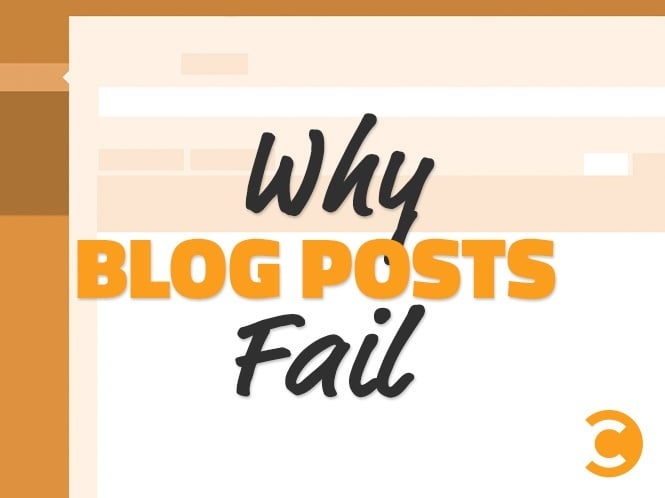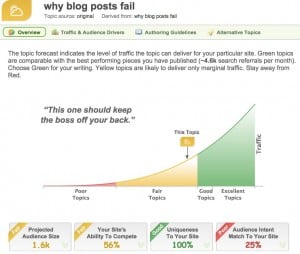
You are wasting money on content that has little chance of success.
Are you creating more content this year than you were last year? Almost certainly so. But, is that extra effort being expended efficiently and intelligently? In many cases, no.
As I wrote about in my post “Are you thinking about your blog all wrong?” today’s content marketing success formula is different – a lot different – from the formula of 2013 and prior.
Hitting singles and doubles on a consistent, daily basis doesn’t yield results like it once did. The competition is too intense, and the relationships with readers are too diffuse. Now, content marketing success is about home runs and strikeouts. This is especially true for blogs, where 80-90% of all blog traffic comes from 10-20% of the posts you publish.
You’re probably striking out too often, and that’s an expense you may not be able to afford.
Content Marketing Isn’t Free
In comparison to its attention-creating forebears like advertising and direct mail, content marketing offers lower production costs on a per-execution basis. Yes, there are exceptions of very luxe content marketing programs, especially native advertising, where the production costs may rival “traditional” advertising. But almost every time, content marketing is less costly to make than many other forms of company communication.
But less costly does NOT mean free. Let’s demonstrate with math!
- You have a blog that publishes three posts per week, 50 weeks per year
- You have a full-time blog editor/manager that makes $60,000 per year ($90,000 with standard benefits/expenses)
- Your posts are written by subject matter experts in your company with an average salary of $80,000 per year ($120,000 with standard benefits/expenses)
- Writers take an average of three hours to write/edit their posts
- Your blog tech, hosting, design, plug-ins cost an average of $1,500 per month
Using these assumptions, every blog post you write costs you – in real dollars – an average of $900. That does not include any funding whatsoever for promotion and amplification. Social ads, email, influencer outreach. All of that is on top of the $900.
Why Are You Wasting $900 on a Blog Post That Won’t Work?
The key to using your content marketing resources – which I presume are not unlimited – wisely and efficiently is to avoid wasting $900 or more over and over and over and over. Stop publishing blog posts that are almost assuredly going to be strikeouts, and instead publish more blog posts that have a chance to become home runs.
 There is more content than ever. You are competing – for attention at least – against all of it. The way to successfully combat an increase in competition is to use strategy and planning to create content that has a fighting chance to break out and become a home run.
There is more content than ever. You are competing – for attention at least – against all of it. The way to successfully combat an increase in competition is to use strategy and planning to create content that has a fighting chance to break out and become a home run.
I define blog home runs as posts that have long-term appeal and rank well in search engines, generating substantial, ongoing traffic for the blog on a day-by-day basis well into the future. Here’s one I wrote about my top 33 digital marketing blogs. It is one of the 15 most popular pages on this site, among more than 2,400 total pages. That’s not an accident.
You need to figure out what creates home runs on your blog, and do more of that, while purposefully and surgically eliminating as many strikeout posts as possible. Because publishing more of the same limp, fetid content over and over with almost no hope for real success is like playing a jazz odyssey in front of a festival crowd.
You may feel like you accomplished something because you made your three posts/week goal, but are you really moving your business forward?
You are not. You are just lighting money on fire, $900 at a time.
The Content Marketing Crystal Ball
This stuff is knowable. You can give yourself a better chance of creating home run posts. And you can do it before those posts are even written. You need three things to make this work:
- Predictive content analytics (we swear by InboundWriter for this. We like their software so much, we asked them to sponsor our Content Pros podcast)
- The time/patience to use a tool like InboundWriter to help craft blog topics in advance
- Enough of a partnership with your blog writers that you can help guide their topics, using predictive analytics
For the post on my top 33 digital marketing blogs, for example, I used InboundWriter to help me figure out exactly how to position that post. I knew I wanted to share what blogs I read, but predictive content analytics looked at all of the traffic and posts on Convince & Convert, plus everything competing blogs are doing, and recommended optimal ways to craft the topic. Boom! A home run is born.
The software is easy to use. Perhaps unexpectedly, the third one in the list above is often the hardest piece of the content marketing predictive analytics journey.
Of course, everyone who has ever written a post wants to craft a home run, like Josh Bernoff’s recent post on top 10 writing tips that went supernova and generated nearly 400,000 page views. But most bloggers are writing because they have a very specific idea and a point they wish to make. Bloggers always receptive to using software and big data to help them refine/morph that idea into something with a statistically greater chance of success, even if it’s in their best interests.
The Statistical Impact of the Home Run
 We’ve fortunately been able to make it work here at Convince & Convert and the impact on our blog has been huge. I even used it on the post you are currently reading. The software says there’s a decent chance this post breaks out of the pack.
We’ve fortunately been able to make it work here at Convince & Convert and the impact on our blog has been huge. I even used it on the post you are currently reading. The software says there’s a decent chance this post breaks out of the pack.
And some of them definitely do just that. Our original trial with InboundWriter found that posts we wrote adhering to their topical recommendations (the “home run” finder, if you will) increased our visits from organic search by 4.4x compared to posts we published that didn’t use their data. That was a couple months after those posts were published.
We recently updated the analysis and found that those posts now generate (nearly a year later) 10.7 times more organic search traffic than do the posts that didn’t use the InboundWriter recommendations.
I’m working on a step-by-step illustration of our blogging process and how we use guest contributors and InboundWriter to craft more home runs. Watch for that one if you’re interested in exactly how all of this works at the granular level.
Content marketing success isn’t magic. And it’s not luck. It’s a combination of strategy, analysis, and good content creation. But if a lot of your posts are striking out, do something about it.
Home runs are out there waiting for you to write them. Batter-up.

